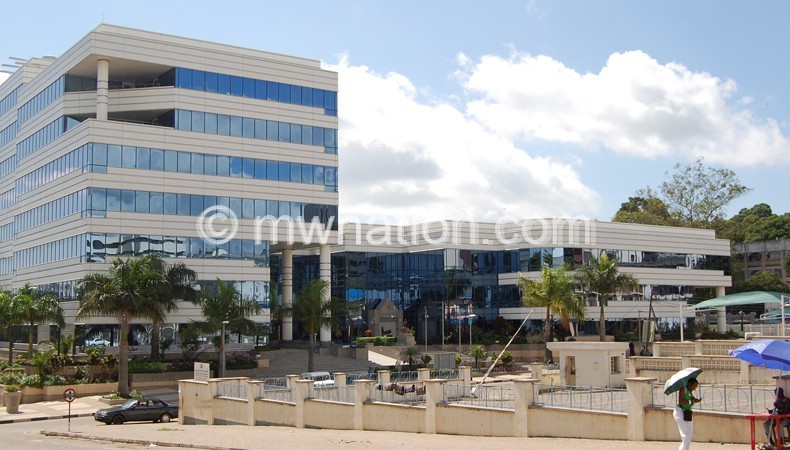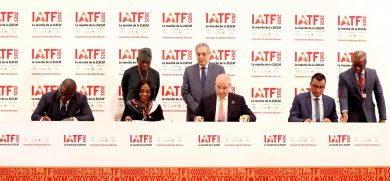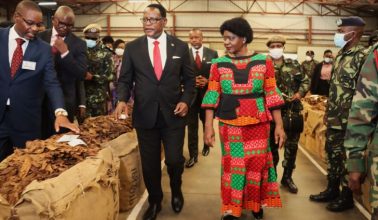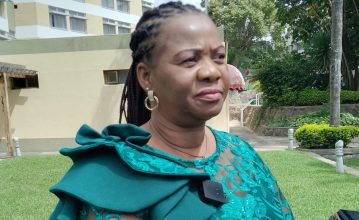2016: enduring high Interest rate climate
It would be tempting to argue that 2016 will end on a slightly good note, particularly because the Reserve Bank of Malawi (RBM) has reduced the policy rate—the rate at which commercial banks borrow from the central bank as the lender of the last resort—by three percentage points from 27 percent to 24 percent.
RBM Governor Charles Chuka announced the downward revision at a news conference after the fourth Monetary Policy Committee (MPC)meeting on November 24. He attributed the cut in policy rate to the easing inflation, currently at 19.9 percent, stabilisation of the kwacha and fiscal discipline.
For the most part of 2016, the headline inflation rate was at 24 percent, but later dropped to 20 percent in 0ctober and 19.9 percent In November following the reduction in food prices, according to the National Statistical Office (NSO).

Speaking on the same, Secretary to Treasury Ronald Mangani said there was hope that production will respond to the move by RBM and hoped to see more goods being produced, more jobs being created and a trend that reflects a reversal in the economy instability the country has been facing for a long time.
Consequently, commercial banks responded by reducing their base lending rates. The new rates are now ranging from 32 percent to 37 percent across all the 10 banks. Before the policy rate cut, interest rates were hovering at around 44 percent for risky borrowers.
The policy rate cut also saw the reduced yield in Treasury bills (T-bills)— not so good news for people who like to trade in government securities. The T-bills yield reduced from 29 percent to 25 percent following the bank rate cut.
But the base lending rate cut by commercial banks did not bring the anticipated excitement from the consumers.
Consumers Association of Malawi (Cama) executive director John Kapito described the interest rate cut as a move from “worse” to “bad”, saying that even at 32 percent, the rates were still high in view of the current macroeconomic environment.
He said there is still more government needs to do to provide a conducive environment, especially for small and medium enterprises (SMEs).
In his sentiments, Malawi Confederation of Chambers of Commerce and Industry (MCCCI) chief executive officer Chancellor Kaferapanjira said although the reduction in the benchmark rate may stimulate private sector borrowing to some degree, the rate still remains high for businesses that would want to borrow for long-term investment projects.
Malawians have endured high interest rate environment for the past years. SMEs and individual borrowers have for a long time decried the evils of high lending rates.
Small and Medium Enterprises Association (Smea) president James Chiutsi, in an earlier interview, said high interest rates were worsening access to credit among SMEs; hence, frustrating their progress.
Vito Sandifolo, project manager for Cassava Adding Value for Africa, said at the Cassava Investment Forum in Blantyre recently that investors are failing to optimise the commercialisation of cassava due to high interest rates.
He said the high cost of capital prohibits private sector investment in agro-processing and participation in the cassava value chains.
As usual, there were many foreclosures within the year, with people losing their properties to commercial banks as a result of failure to service their loans. Many small businesses closed and people lost jobs.
Although some people found themselves in this situation as a result of financial mismanagement, for the majority of them it came about because of high interest rates.
But that was not all, even commercial banks themselves had to dance to their own tunes. The level of non- performing loans (NPL) was on an increase, according to the RBM banking lending survey (BLS) covering the period April 2015 to March 2016.
Analysts argued that the increasing levels of NPLs was putting commercial banks under pressure.
Economics Association of Malawi (Ecama) executive director Edward Chilima said there was need to address the high interest rates and structural challenges facing the economy, stressing that high interest and inflation rates coupled with poor performing businesses would only increase the level of NPLs.
Bank officials were quoted in the media complaining that they want to see more people borrow from banks to improve on their returns, but it was not possible as borrowing was too low at the high interest rates.
Higher interest rates mean that consumers do not have as much disposable income and must reduce their spending.
Higher interest rates also mean that banks make fewer loans and these effects cut across different sectors.
The opposite is also true for lower interest rate because more are willing to borrow to make big investments; hence, increased spending throughout the economy.
This scenario creates a situation where output and productivity increases.
Therefore, RBM did well by lowering the policy rate, but as it has been argued by different stakeholders, it was not that deep to induce borrowing for investment. n





